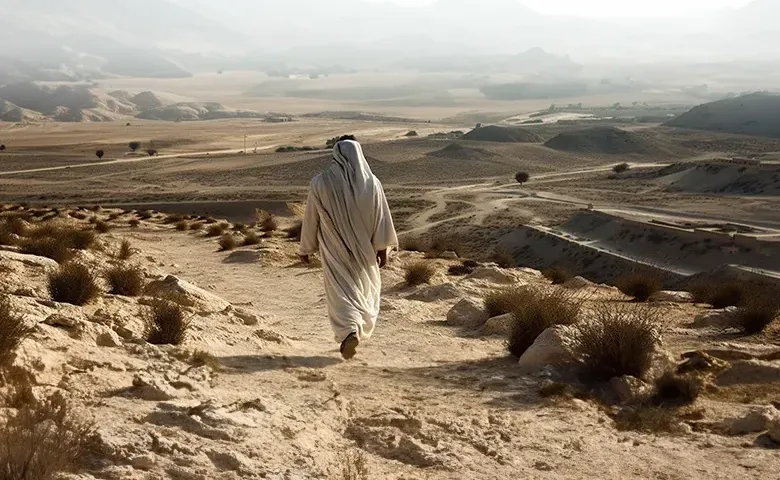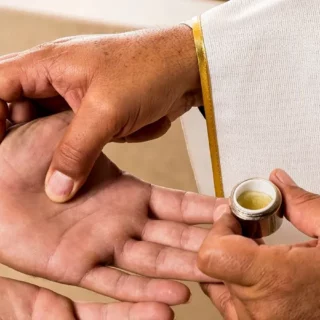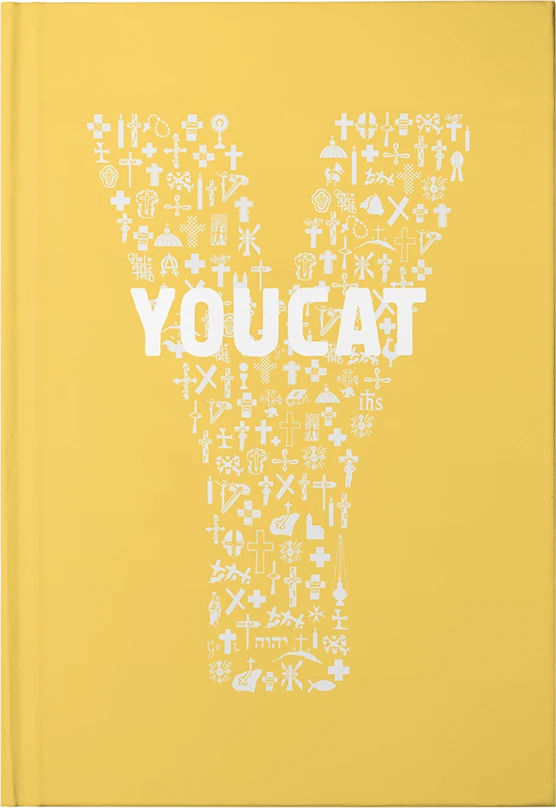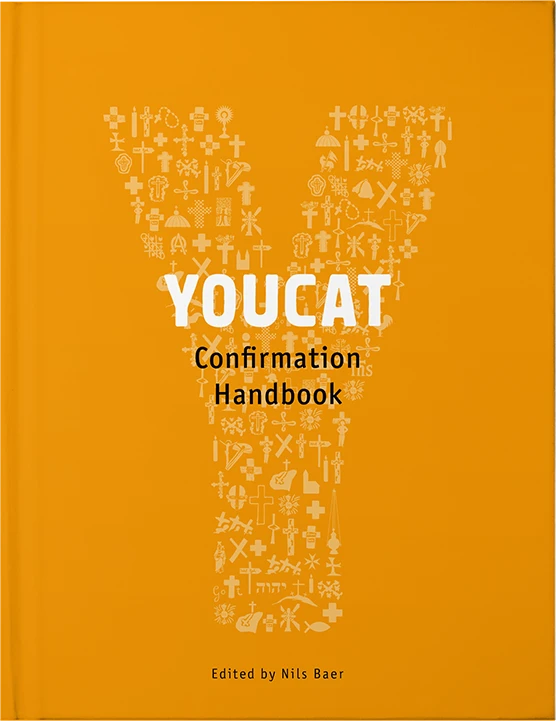

Credopedia
Saint Joseph
Who was St. Joseph? What role did he play then and now. An up-to-date interpretation based on the Bible and the Catechism.
Saint Joseph
Joseph of Nazareth (also: Joseph, from the Hebrew, “God added”) was the fiancé of the Virgin Mother of God, Mary, as well as the foster father and protector of little Jesus. Pope Francis honoured one of the greatest saints of the Church by making 2021 “the year of St. Joseph”.
What does the Holy Bible say?
Joseph, a carpenter (Mt 13, 55) in the village of 300 inhabitants of Nazareth, was betrothed to Mary (Mt 1, 18-24). When she became pregnant, he wanted to separate from her according to the law. However, through an angel of God, the supernatural origin of her pregnancy became clear to Joseph in a dream. Courageously trusting in God’s will, Joseph accepted Mary and took care of her and the child. According to the evangelist Luke, the birth took place in Bethlehem (Luke 2, 1-7) because Joseph was of Davidic lineage and had to attend a census with Mary, who was pregnant. Warned by another angelic message of collective infanticide, he fled with Mary and the child to Egypt and then returned home (Mt 2, 13-23). The “parents of Jesus” are mentioned again later, when they discover the young Jesus speaking with the scribes in the temple (Lk 2, 41-51). “Then”, we are told, “Jesus returned with them to Nazareth and obeyed them. … But Jesus grew up, his wisdom increased, and he found favour with God and men.” In several places in the Gospels, Jesus is also called “son of Joseph” (Jn 1, 45, Lk 3, 23, etc.), which does not contradict the virginal birth that took place at the same time. As Joseph only appears in the story of Christ’s childhood, the Church has always assumed that he died before the public testimony of Jesus.
A short YOUCAT-Catechesis
A father who shoots
Pope Francis is a man of heart. The reason he chose St. Joseph, this man of tangible action, out of all people as “Man of the Year” in 2021 has to do with the global pandemic and his incredible empathy with the needs and concerns of ordinary people. Thus, the Pope writes: “In this crisis, we have seen that our lives are shaped and sustained by ordinary people — usually forgotten — who are not on the front pages of newspapers and magazines or the centre of the latest broadcast, but who is undoubtedly writing an important page in our history today. Doctors, nurses and health workers, supermarket employees, cleaners, volunteers, priests, religious and many, many others who have understood that no one is saved alone.”
Wonderful! Is there a better way to justify it?
The Pope and his favourite prayer
The fact that St. Joseph is also the Pope’s favourite saint makes it all the more endearing. Morning after morning, the Pope says he recalls an ancient prayer which offers “veneration and trust” to St. Joseph, but also “challenges him a little.” We read this prayer, which is as uncontemporary as it is very topical both with emotion (and perhaps with the idea of adding it to his private treasure of prayers):
“Glorious Patriarch St. Joseph, whose power knows how to make impossible things possible, come to my aid in these moments of anguish and difficulty.
Take under your protection the situations such serious and difficult situations that I entrust to you, so that they can have a good solution.
My beloved father all my confidence is placed in you.
Do not let it be said that I have invoked you in vain. and, as you can do anything with Jesus and Mary, show me that your goodness is as great as your power. Amen. “
Do you have a relationship with Saint Joseph?
I also have a history with Saint Joseph. Once I went to confession in Taizé and I met a Swiss priest from the community. It was just when I was facing an existential challenge and I asked myself the question: Could I dare to have a relationship with St. Joseph, and wouldn’t I risk the material well-being of my family with its three children for a pious cause? The man then asked me a strange question: “Are you related to St. Joseph?” I stuttered a little. I hadn’t yet considered it from that point of view. “You should,” said my confessor, who ventured to add a little prophecy: “Then you will never have too much. But you will never have too little either.” Since then I have had a relationship with St. Joseph. And YOUCAT also has a relationship with him. Since we know that everything is in danger, especially when it is a missionary project, we recently chose Joseph as our patron. When things get complicated, he gets us out of trouble. All those who pray for YOUCAT — and fortunately there are many of them all over the world — should also add a little prayer for the intercession of this wonderful man.
The adoptive father
For Christmas, a very loving old lady sent me a special card that she had bought in Florence before the pandemic. A famous painter — Gentile da Fabriano — painted a picture of Joseph there at the end of the 15th century which completely captivated me. I looked at the painting and thought: “Wow, a real adoptive father!” In German — not in all languages — the adoptive father is also called “Ziehvater” (ziehen = to pull). Pulling is the opposite of pushing. Pulling something means: pulling something forward, upwards. An “Er-zieher” (educator / “puller”) is an educator who brings out the best in a child. A small deer that has lost its mother can be raised with milk, and a family in which a baby has just been born desperately needs a “Joseph” — strong, caring and wise — to pull the whole family towards a better future, especially when external circumstances make it a matter of life or death. It was the same with Jesus: Mary could have been abandoned and stoned to death with her illegitimate child, but there was this strong man, this Joseph, who said to himself and to the world: “Not if I have anything to say about it!”
And as soon as the child was born, he could have been the victim of a cruel despot. Not with Joseph there! Joseph didn’t flinch, and he took his little family, put them on a donkey and ran away to Egypt. Is there anyone who painted him better than the Gentile da Fabriano? Here you see in Joseph a man as strong as he is attentive and tender, leading a patient beast of burden on a leash — out of danger! — as he looks attentively at both the beast and its precious cargo. Wrapped in the blue of eternity, Mary has eyes only for the mystery to be saved in her arms: the child in whom God himself became man, but also a potential victim of violence.
Later, Joseph becomes Jesus’ teacher. For 30 years, Joseph was the head of the family — and, of course, the boy learned his father’s handicraft. We can imagine a contemporary version of this time in their lives during which the construction company Joseph & Son would have contributed to the construction of the town of Sepphoris, one of the most ambitious building projects of the time. Sepphoris was located eight kilometers from Nazareth, and all available help was needed on the spot. It is beautiful to imagine Joseph teaching Jesus the technique of woodworking, sawing, planing, sanding, training his eye to discern a particular grain. I begin to dream: Jesus, under Joseph’s eyes, wipes the sweat from his forehead, blows the shavings from the piece, the tips of his fingers feel the fine softness of the surface… It is in this school of the human that Jesus matured. DOCAT 137 says: “Jesus was ‘like us in all things except sin’ (Council of Chalcedon, A.D. 451, quoting Heb 4, 15; cf. CCC 467). He lived among fishermen, farmers, and craftsmen, and he himself went through an apprenticeship, laboring until he was thirty as a carpenter in Joseph’s workshop. In his parables, he uses images from commercial life.” And when he later recounts parables, they speak of the simple things of nature, commerce and everyday use.
In the depths of disorder
It is as if the world and the Church were never as bogged down as they are today. Will the insidious virus claim more and more victims, destroy millions of jobs and even entire state economies? In such moments, some people rediscover God and the old hymn that says: “There is no one who can fight for us but you, our God, alone….” But where is this God? Will the Catholic Church, once the heart of the West and the leaven of a new and humane world, sink into the twilight of abuse and double standards? Will she be discarded as one discards an old donkey that is no longer worth the fodder it is given? But the old donkey — you see it in Master Fabriano — comes and goes… carrying on its back what heaven and earth cannot contain: The perfect world, eld by the tender hands of a little woman who believes without limits. Taken out of the danger zone by the one who thinks and acts: Saint Joseph.
What indicates salvation in the world and what makes the Church attractive even today are her adoptive parents, her beasts of burden, the saints. St. Joseph, St. Catherine of Siena, St. Francis of Assisi, St. Teresa of Avila, St. Philip Neri: they all pulled the Church along, which had become tired and disoriented, out of the mud. Joseph and the others live forever in God’s environment, as you may call it. Among the saints, YOUCAT 132 says: “Once God takes them home, they also sanctify the Church, because they ‘spend their heaven’ supporting us on our path to holiness.” Where is Joseph heading? Perhaps it is time to put in a safe place, for a time, the mystery of this child who cannot be in his own country (Jn 1, 11: “…his own have not received him”), so that he may grow up in silence and one day return from a foreign land to the land where he will be great. Saint Joseph, pray for us, pray for us, pray for us!

YOUCAT Digital
Discover our digital products, which will help you to grow in faith and become missionaries yourself.







